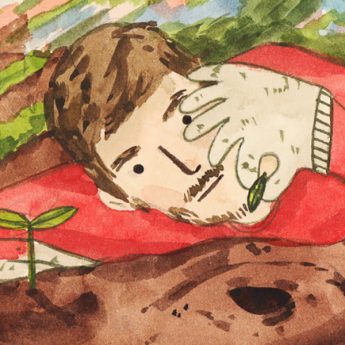The digitisation of books combined with the expiration of the copyright on numerous old titles means that there are plenty of classic works on Japan available for downloading at no charge. These can be accessed through sites such as Project Gutenberg and even ordered through Amazon for (free) delivery to a computer or Kindle. Ordering through Amazon provides the added pleasure of receiving the usual email confirming your order, but with a total of zero pounds and pence. This month’s reviews look at three such books, written at the turn of the last century by early Western visitors to Japan.
Japan: An Attempt at Interpretation

By Lafcadio Hearn
Published just after his death in 1904, the book, as its title suggests, represents one man’s efforts to understand a country that must have seemed truly alien when the Irishman reached its shores at the tail end of the 19th century.
Hearns was clearly enchanted by Japan, becoming a Japanese citizen and spending the rest of his life in the country. He wrote of “districts where no case of theft had occurred for hundreds of years; where
the newly-built prisons of Meiji remained empty and useless; where the people left their doors unfastened by night as well as by day”. He found the people he encountered so gentle, honest and polite that he reported, “you are tempted to believe that you have entered into the domain of a morally superior humanity”. Although he laments that, “of course, the conditions of which I speak are now passing away”, he may have been relieved to know that many Westerners, arriving more than a century later, get the same feeling.

By Isabella L Bird
English writer and natural historian Bird must have been one of the earliest Western female explorers of Japan’s more remote regions as she travelled to such uncharted wilds as Hokkaido, referred to as Yezo. The book is a series of letters recording her experiences and observations. While the author’s bravery in visiting relatively unexplored places is admirable, her Victorian English superiority complex is so strong it makes the book sound like a parody at times. After spending time with the Ainu people she had come to study, she wrote, “They were very kind, and so courteous, after a new fashion, that I quite forgot that I was alone among savages”.
Of the Japanese who had started to wear Western dress during the Meiji era, she noted: “Japanese look most diminutive in European dress. Each garment is a misfit, and exaggerates the miserable physique and the national defects of concave chests and bow legs”.
Bird was not much taken with the local cuisine either, taking provisions on her travels because “the fishy and vegetable abominations known as ‘Japanese food’ can only be swallowed and digested by a few, and that after long practice”.
Condescension and racism aside, Bird’s descriptions are vivid and the book provides an entertaining insight into how foreigners must have felt experiencing Meiji Japan.
Japan
An advisor to the Imperial Ministry of Education in the 1870s, Murray wrote this history of the archipelago covering from ancient times

By David Murray
up to the time when he was living in the country. There are numerous entertaining snippets of information throughout the book, including: “The height of Fuji-san, according to the measurement of English naval officers, is 12,365 feet” and “the average height of the males among the Japanese, as obtained by the measurements of skeletons verified by measurements of living specimens is 5.02 feet, ranging from 4.76 feet to 5.44 feet”.
While some of the events chronicled may have been reinterpreted in the meantime, it does provide a perspective of the Western view of Japan, much of the time’s knowledge about which must have come from Murray’s writings. The majority of the history remains unchanged, however, and the book provides a good account of Japan up to the middle of the Meiji era. It is also where I finally found out the origin of the name Japan.





